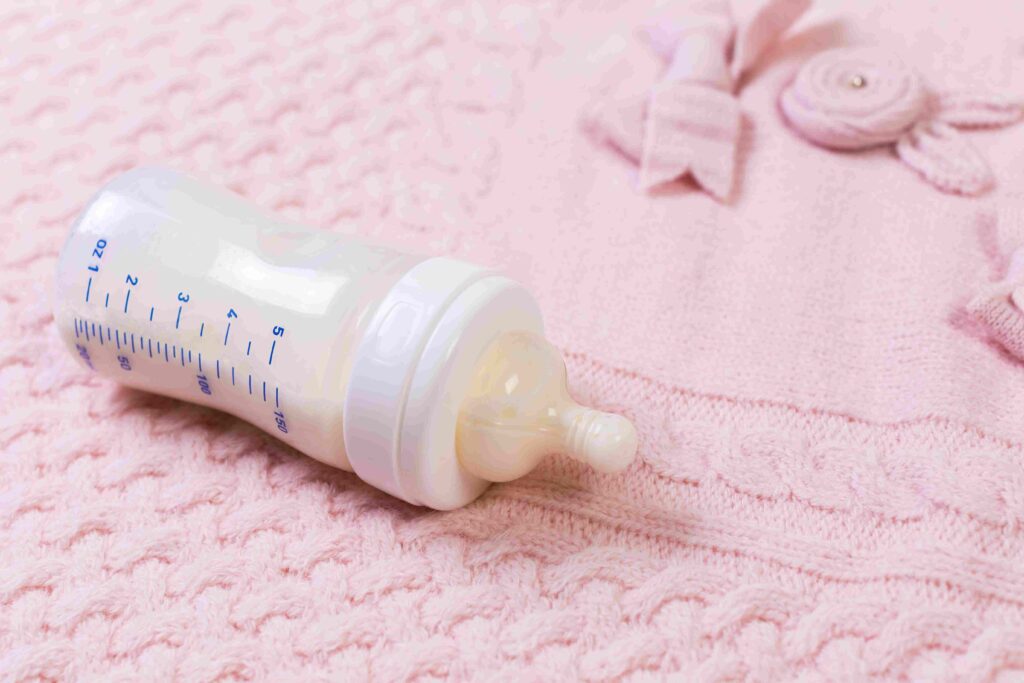
- +61 1300 704 750
- admin@parentinggenie.com.au
- PO Box 706, Townsville, QLD 4810

Genie Chat
Introduction:
As a new parent, you’re embarking on a journey filled with precious moments of feeding, bonding, and nurturing your little one. If you’ve chosen to embrace bottle feeding, you’re not alone – it’s a path chosen by many parents for various reasons. This guide is your compass, offering practical advice and tips to ensure that your bottle-feeding journey is smooth, safe, and rewarding. From establishing a feeding schedule to mastering formula preparation and implementing safe bottle practices, we’re here to empower you every step of the way. Join us as we dive into the world of bottle feeding, providing you with the insights you need to feed your baby with confidence and love.

Creating a feeding schedule can provide structure for both you and your baby. However, remember that flexibility is key. Newborns typically feed every 2-3 hours but be responsive to your baby’s cues – hunger doesn’t always follow a strict timetable.

Choose a formula that meets your baby’s nutritional needs. Consult your healthcare provider for recommendations based on your baby’s age and any specific requirements they may have.

Follow the instructions on the formula packaging carefully. Over-dilution or over-concentration can impact your baby’s nutrition. Use clean, sterilized bottles and equipment for formula preparation.
Always hold your baby while feeding to prevent choking. Keep the bottle at a slight angle to minimize air intake. Avoid propping the bottle, as it can increase the risk of ear infections, choking, and tooth decay.
Hold your baby close, maintaining eye contact and offering gentle touch. Keep their head elevated slightly to reduce the risk of choking.
If you’re transitioning from breastfeeding or wish to mimic its benefits, consider pace feeding. This technique involves allowing your baby to control the flow of milk from the bottle, promoting a more natural feeding experience.
Gently burp your baby after feeding to release any trapped air. Hold your baby against your shoulder or sit them upright while patting their back.
Before your baby’s arrival, sterilize bottles, nipples, and other feeding equipment. Afterward, you can opt for regular washing in hot, soapy water or using a dishwasher with a sanitizing option.
As your baby grows, you can gradually introduce sippy cups to facilitate the transition from bottle feeding to self-feeding. Choose cups that are spill-proof and easy for your baby to grasp.
Conclusion: Your Bottle-Feeding Journey, Your Way:
Bottle feeding is a beautiful opportunity to nourish, bond, and connect with your baby. Embrace the journey with an open heart and mind, knowing that every feeding moment is a chance to foster love, trust, and growth. By following these practical tips, you’re creating a safe and comfortable environment for your baby to thrive. Remember, you’re not just providing nutrition; you’re also creating memories and building an unbreakable bond that will shape your parenting journey.
Subscribe to VPH for Expert Parenting Insights
For expert parenting advice and a wealth of resources, subscribe to the Virtual Parenting Hub. Join a community of parents committed to nurturing and empowering their children. From bottle feeding guidance to a wide range of parenting insights, VPH is your trusted companion on this extraordinary journey. Subscribe today and empower yourself with knowledge that will enrich your parenting experience.
Also Read: Troubleshooting Common Issues in Formula Feeding: Reflux, Gas, and Constipation